Becca Zak, Interpretive Naturalist
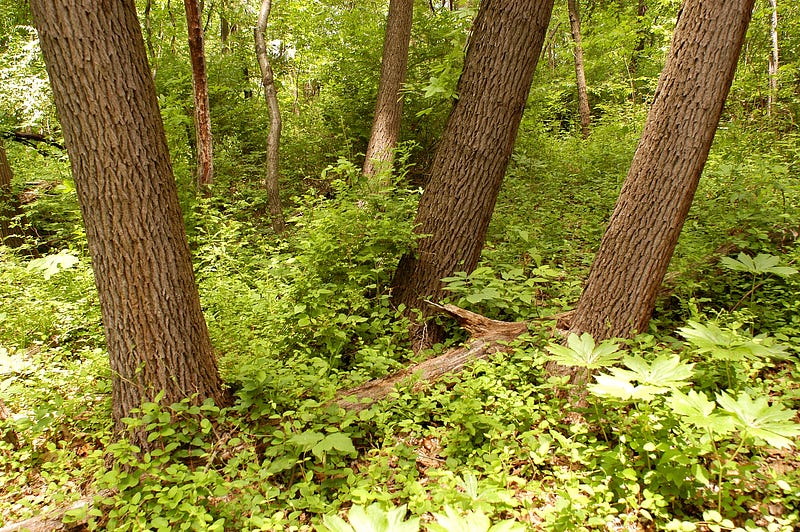
One of my favorite tree ID hikes is along Oxbow Trail in Cascade Valley Metro Park. The lowland riparian zone stands in sharp contrast to the upland forest overlooking the Cuyahoga River, and the interpretive moments are abundant.
Let this blog serve as a guided hike along this trail. I hope you learn lots and discover a newfound appreciation for our oxygen-creating, shade-making, carbon-sinks of hardwood neighbors — trees!
Welcome to Cascade Valley Metro Park — Oxbow Trail, aptly named after the sharp bend formed from meandering waters that cut deeply into the riverbank of our “Crooked River.”

The first tree we’ll look at is the American elm. This tree is on your right, shortly after beginning the walk from the trailhead. A tree that loves wet feet, American elm is easily identifiable from its buttress feet and striped bark layers, denoting the American flag with its alternating light and dark stripes.

As you walk down the trail, you’ll notice other water-tolerant trees; most notably, a towering stand of giant, dead trees. Confirm their identity by looking closely at the bark patterned with the letter “A” and you’ll discover the white ash. This tree species was devastated by the emerald ash borer that arrived in Ohio in 2003 and their lack of foliage reveals their opposite TV antennae-like branches.

As you continue along the damp trail and hear the Cuyahoga waters rushing, a gentle giant appears. Thick, strong and furrowed, you will notice the light-gray and distinctly beautiful bark of the Eastern cottonwood. A member of the willow family, these trees feature flat petioles, the slender stalk attaching each individual leaf to the woody branch. When a brisk wind blows, pay attention to the light rustling overhead and look out for falling twigs! In fact, this tree’s tendency to shed branches during high winds revealed its unique pith, the very center of new twig growth, and captured the attention of First Nations storytelling.
When the winds blow and the Cottonwoods quake, thick but fragile twigs snap and fall to the ground, revealing a star at the tree’s center. To release a new star into the sky, hold a broken twig to the heavens. Clear skies follow storms to show off the bright new additions to the starry skies.
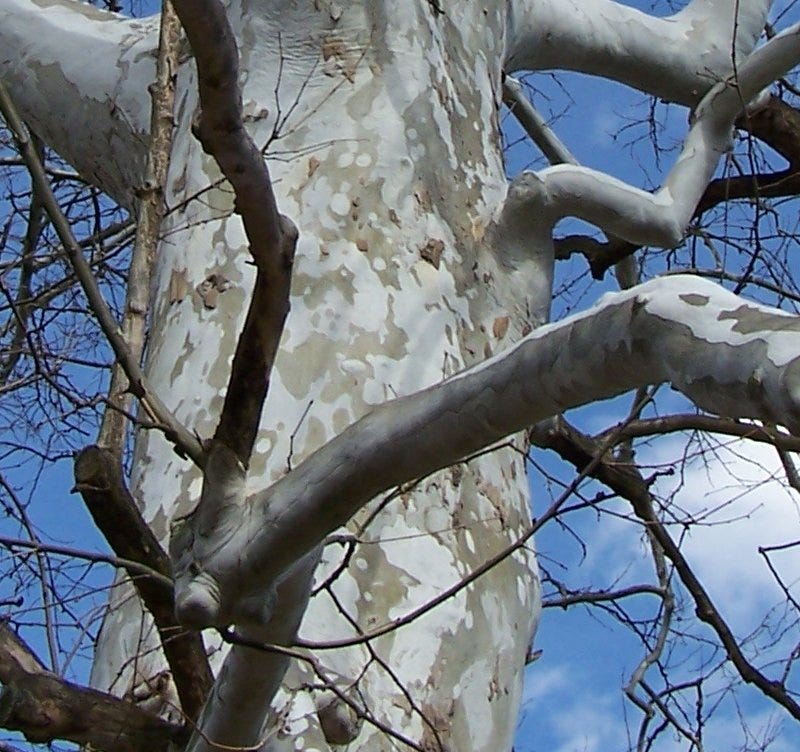
The next tree, also relevant to the First Nations, is the distinct and beautiful American sycamore. The flaking bark does make the tree look “sick,” but fear not, this is their natural growing pattern. The reptilian bark at the base of each trunk is rigid and does not flex with the tree as it grows. This reveals the flakey and white blotches beneath. First Nations would find water for drinking, cooking and travel by walking toward the “ghost trees” that lined waterways.
The last tree we’ll highlight in the riparian zone has some anatomy to it. The sculpted musculature of this tree is striking and discernible. The bark of the ironwood, also called musclewood, hornbeam or blue beech, looks exactly like a strong, flexing arm! These are dense, slow-growing understory trees — the average diameter of a 30-year-old tree is only 6 inches!

We’ve made it to the mid-way point! Upon entering the picnic area, pause at the large, dark tree in the middle of the trail. Meet the black walnut. A thick trunk with a wide, open crown, identifiable by a rich, dark brown revealed when the bark is knicked. These trees produce a chemical called jugalone, which makes the soil above the roots uninhabitable for many species of plants. The last identifiable feature is the leaf scar, formed after the leaves shed in the fall. The leaf scar of the black walnut looks like a monkey or owl face — how cute!
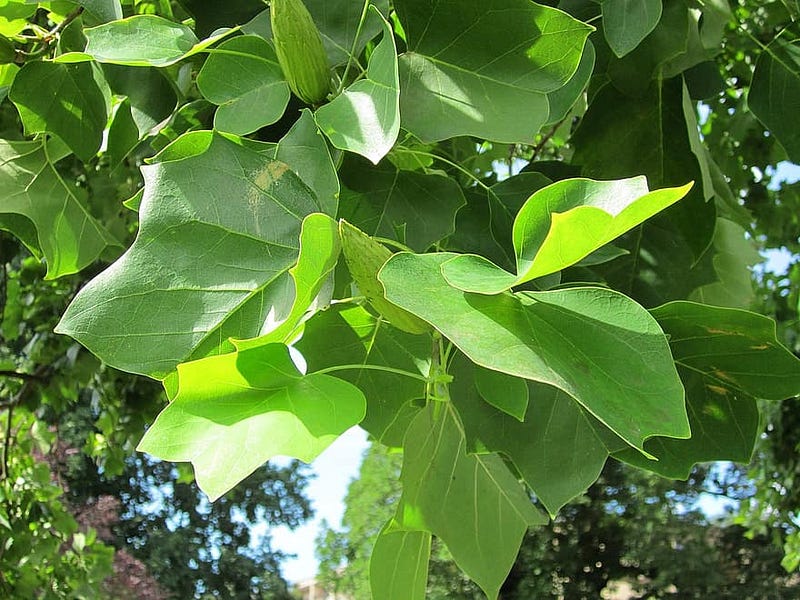
Pass through the picnic area and continue up the many steps toward higher ground. You will notice the vegetation drastically change: lush, wet and sweeping becomes open leaf covered forest. Pause halfway up the steps and catch a glimpse of an abnormal tulip tree…and catch your breath, too! With leaves that look like T-shirts hanging on a clothesline, these pioneer species move in and create forest habitat from scratch. You will also notice their artistic-looking bark: imagine a painter walked up to the tree and dabbed light gray paint in the bark valleys. Simply stunning!
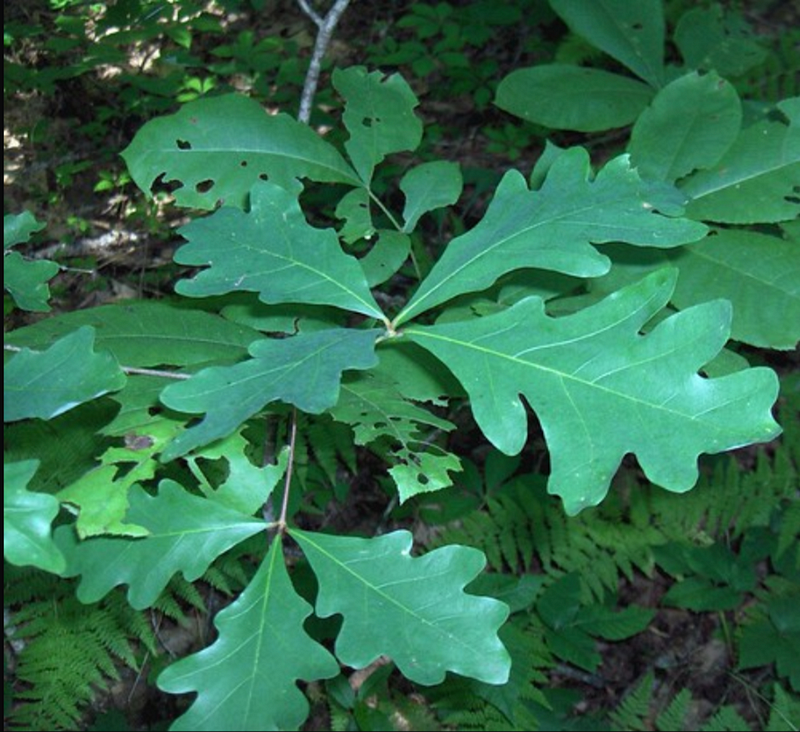
You’ve finally reached the top of the steps and are greeted by the keepers of the forest gate, towering over either side of the trail. The roof shingle bark and the deeply sinused, rounded edges of the leaves lead to one group of trees — the white oaks! While these trees can tolerate wet feet, they prefer well-drained soil; and now begins the discovery of different tree species in the upland forest.
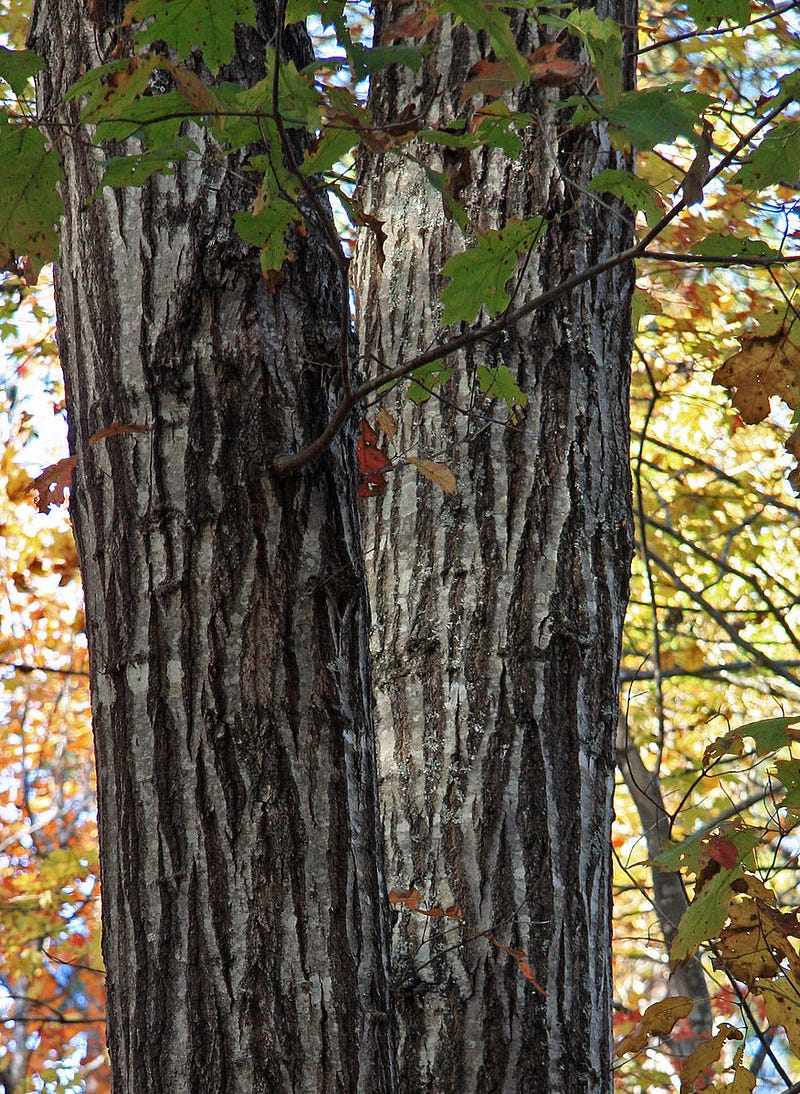
Turn left to continue onto Oxbow Trail and compare the oak families — up next are the reds! Comparatively speaking, members of the red oak family have ski-slope like striations running down the length of the trunk and deeply sinused, pointy edges to the leaves. If you would like to add a native tree to your yard landscape, consider any native oak species — they host, or are the main food source for, over 500 species of insect and bolster our local food web!

Continuing along, you will notice curved, dark tree trunks in clusters. Upon further examination, you discover the bark resembles burnt cornflakes and may see oozing amber-colored sap. Congratulations! You’ve found the black cherry! A beginner tree for those starting with identification, these stand out in the forest and offer showy white flowers in the late spring. Cherries are another great addition to your yard landscape, hosting over 300 species of insects.

Another one of my favorites can be seen behind the trail marker before heading down the steps. About 25 feet off-trail surrounded by ramps, discover the sassafras. Connected to lime-green new growth are leaves of different shapes: a ghost, a mitten and the stereotypical leaf. Have no fear, all three belong to this sweet-smelling deciduous tree. While the bark of sassafras is similar looking to black walnut, they differ in two noticeable ways:
1. Black walnut bark is furrowed in continuing lengths, while sassafras is more disjointed, and the furrows do not exactly line up. I’d like to imagine sassafras bark was made when a giant played with the tree trunks like a Rubik’s Cube; twisting every cube of bark just one spot.
2. Knicked black walnut bark reveals a rich, dark brown color, while knicked sassafras bark reveals a bright orange color. By no means does this mean go around shaving tree bark and opening them up to disease and pests — there are existing knicks; spend some time to find them and leave your pocketknives at home!

Carefully continue along the trail, down the steps and notice a stand of trees with cracked bark on your right. See those knee and elbow patterns? You are looking at the chapped bark of the red maple. A closer look will reveal a red petiole attaching the distinct leaf to the twig. In fact, in every season, something is red on this tree: red flowers in the spring, red petioles in the summer, red leaves in the fall and red new growth in the winter.
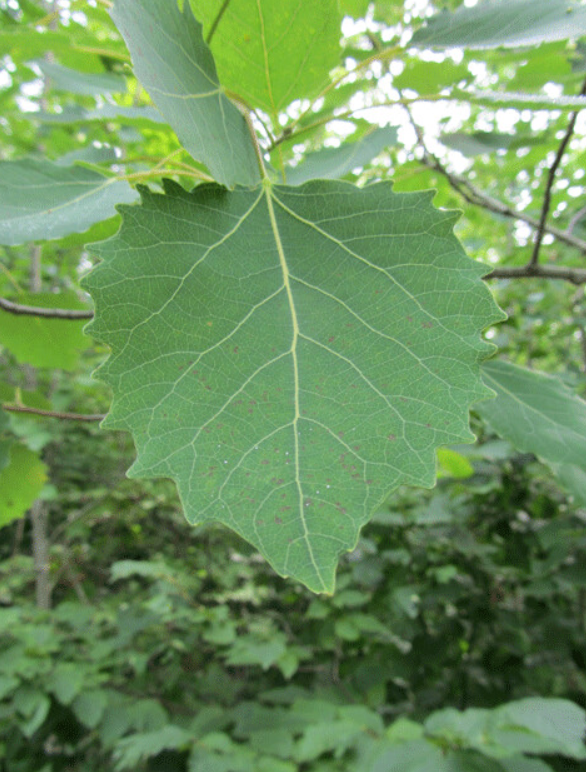
Onto the final, and my all-time favorite, tree that just so happens to be our last stop. On your right before the bend and slight incline in the trail stand four majestic metallic beauties. Look up! To me, these trees look like spray painted sentinels over the hillside. Enter the beautiful bigtooth aspen. Upon closer observation, you will find diamond plated bark for the first 10 feet or so of the trunk, transitioning into bark reflecting a smooth silver sheen on the upper branches. Like the heart-shaped leaves of the Eastern cottonwood, bigtooth aspen have flat petioles, too!
While there are many trees to identify and learn the unique histories of in all of our parks, Cascade Valley Metro Park is a great place to begin your dendrological journey! Consider using this article as your guide as you explore Oxbow Trail. Take plenty of pictures: bark, twig and leaf are all important! Good luck! Stay safe and enjoy getting to know your local tree species in Summit Metro Parks.